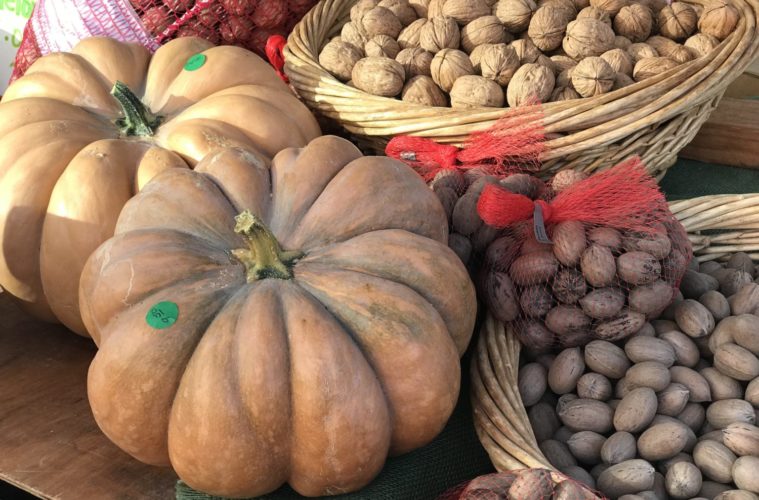2020 might just be the year to turn Thanksgiving upside down and think outside the roasting pan. We chatted with three chefs from Pasadena’s Institute of Culinary Education about taking a break from the traditional and experimenting with some new ideas like opting for turkey legs instead of a full bird since celebrations will be small this year, trying a stuffed squash instead of turkey for a plant-based meal and adding flavor with herbs and spices rather than dairy to keep the holiday healthy.
The young guard also shared their thoughts on the future of food and dining and what a non-traditional restaurant model might look like.
Thanksgiving to me is all about sides and use of autumn vegetables. My family is vegetarian and vegan so we opt for turkey alternatives. Here are my tips:
Center Squash. Squash is abundant in autumn and perfect as a centerpiece or side. I use large pumpkins for stuffing, or serve individual size acorn squash to make a beautiful bouquet for the center of the table or individually plated. The stuffing is a combination of grains and rice (barley, quinoa, buckwheat or wild rice) that are great for texture and heartiness. Next, I add toasted nuts and seeds mixed with dried fruit. When planning squash as a centerpiece, visualize different colored squash and sizes.
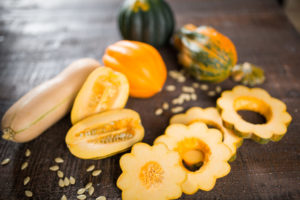
Get squashed (Courtesy ICE)
Think non-traditional. Thanksgiving at our house in some years consists of lasagna with all the flavors of Thanksgiving. A lasagna made with pureed squash, layered with sage pesto, roasted vegetables and a creamy béchamel sauce.
Explore making classic side dishes like mac ‘n’ cheese, sweet potato soufflé and potato gratin with plant-based options. There are several options available now for vegan butter, plant-based milk and cheese. This also makes sides that can be enjoyed by anyone with specific dietary restrictions.
Utilize frozen vegetables to help cut down prep time for Thanksgiving. Frozen spinach for gratin dishes, frozen cauliflower rice for squash stuffing, and frozen French green beans for green bean casserole.
Experiment. Each year, I experiment with different spices and herbs from my travels. While classic dishes are lovely to carry on tradition, I switch up or add new creations to the menu each year.
On the future:
Food and dining are changing dynamically. From consumer behavior, available options and the business model in general. As a woman in the industry, I take this challenge as an opportunity to create a unique solution that’s both adaptable and creative. This is the time to truly push the boundaries for what dining could look like. I see a hybrid of dining intersecting with cooking at home. Around the country, many restaurants have converted to part-pantry, part-delivery and dine-in. This is the time to experiment and take a leap towards a non-traditional restaurant model.
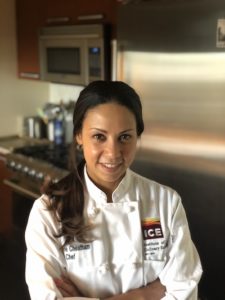
Chef Adrienne Cheatham (Courtesy ICE)
Skip the whole turkey. Rather than a large whole turkey to roast, cook just the turkey legs or even a turkey breast portion this year. I am a fan of the legs. They are delicious, super tender and really flavorful. In terms of portions, I recommend cooking one piece per person. (You don’t need to count on 1lb of meat per person and have a ton of dry breast left over.) You can cook the legs in a Dutch oven or slow cooker and let them braise for hours.
- For braise:
- Season the legs with salt and pepper and then sear in oil in a Dutch oven.
- Add 1 large chopped onion, 3 crushed garlic cloves, 3 sprigs thyme, 2 sprigs parsley, 1lb sliced wild mushrooms and salt and pepper. Stir until the liquid is a bit cooked down.
- Add 2 tablespoons flour and stir in to make a paste.
- Add ¾ cup white wine and stir that in to dissolve the flour and reduce by half (about 3-4 min).
- Add 4 cups chicken or vegetable stock and just enough water to just cover the legs.
- Partially cover the pan and braise. Let cook for 1.5-2 hours.
- For slow roast:
- Combine 1 tsp salt, 1 tsp black pepper, 2 tsp ground coriander, ½ tsp ground cumin, 1 tsp paprika, 1 tsp granulated garlic, 1 tsp onion powder and 1 tsp dried oregano.
- Sprinkle the mixture over the legs. Then lightly spray with olive oil.
- On a foil lined tray, add 1 sliced onion, 3-4 cloves of garlic and 1 cup of white wine. Place the legs on top of this mixture and roast at 375 degrees.
- Cook for 30 min, flip the legs and cook for 45 min, then flip again for another 20-30 min.
- You’ll know they’re done when the skin starts to pull away from the bone. You’ll have really crispy nice skin and deep flavor. You can also get creative with spices like berbere, Mexican spice blend, or something else you love.
On the future:
Once people are more comfortable, you’ll see a surge in experiential dining. Customers will be excited to go out and have an experience. There will be two spectrums that will do well — casual restaurants where you can almost get a home-cooked meal and more experiential dining on the other end. Those middle-of-the-road restaurants may have a hard time coming back after the pandemic. At the end of the day though, no one knows what’s going to happen to the restaurant industry after this. I think people will really want to go back out as soon as they feel comfortable, it’s just a question of how long will that take until people feel comfortable.
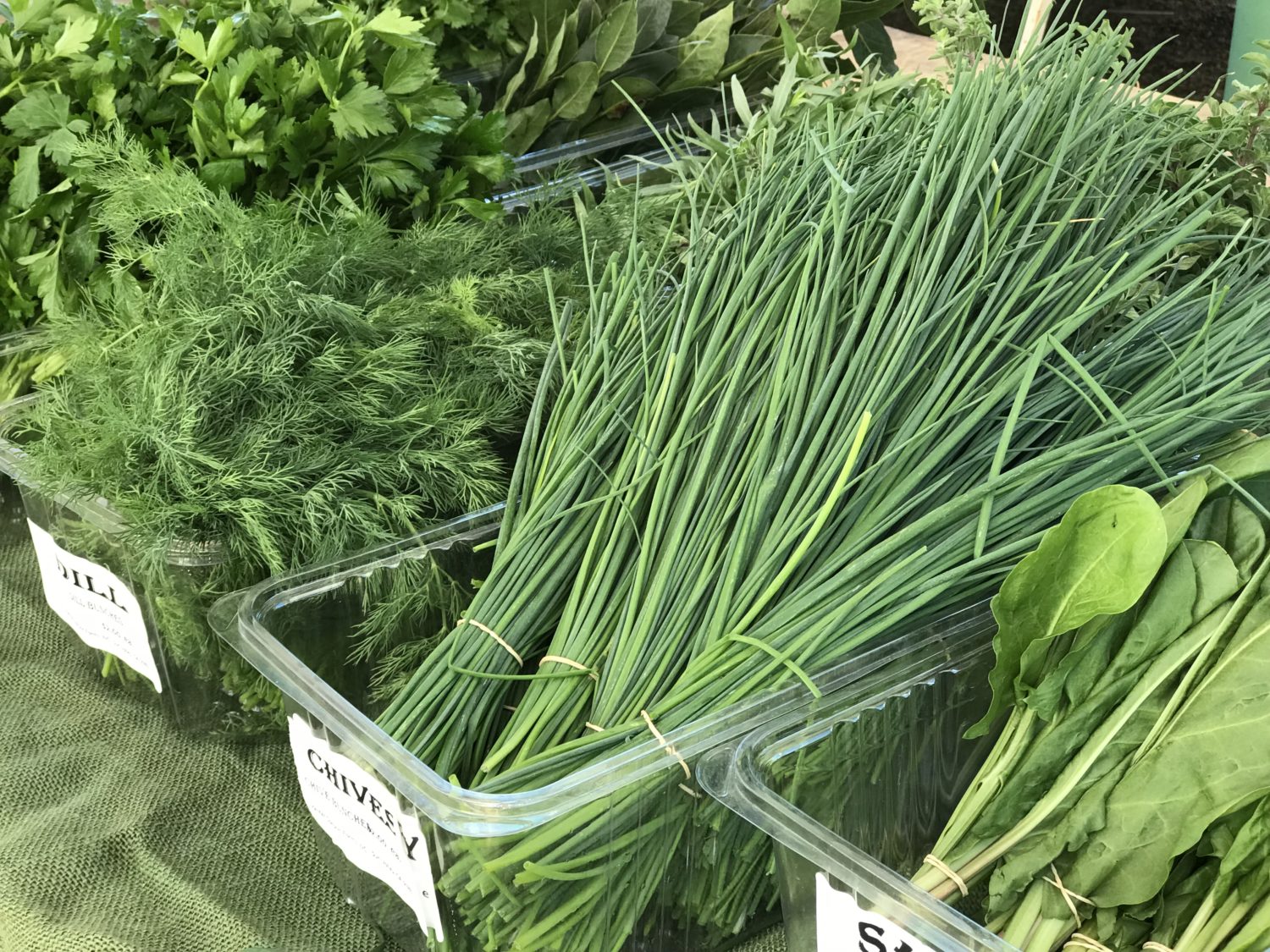
Choose chives (Michele Stueven)
Abbie Gellman, Registered Dietitian and Chef:
Five tips on how to make Thanksgiving healthier:
- Add flavor with herbs and spices. Fresh herbs and spices add flavor and depth to a range of dishes. For example, a handful of chives makes mashed potatoes magical or chopped parsley, sage, rosemary, and/or thyme are amazing in stuffing or other sides.
- Cut fattier dairy ingredients by substituting lower fat dairy options. Instead of loading up those mashed potatoes with butter and cream, opt for lower fat dairy options such as reduced fat milk, plain non-fat yogurt, low fat buttermilk, or low fat sour cream. All of these will add creaminess to those taters, but also add tang and flavor.
- Include plenty of green on your table. Shaved raw Brussels sprouts tossed with a vegetarian Caesar dressing make a refreshing, delicious side dish. Or, how about a salad with a variety of greens paired with some sliced pears, toasted nuts and a citrus vinaigrette?
- Remember that leftovers are great for days to come! No need to fill up on multiple plates of food in one sitting. Pace yourself and listen to your body’s cues. Chances are there will be plenty of leftovers to get you that turkey fix for days to come.
- Make moving a part of the day. Whether it’s a walk in the morning or after the main meal (or both!), finding time to get that body moving can be a part of the tradition.
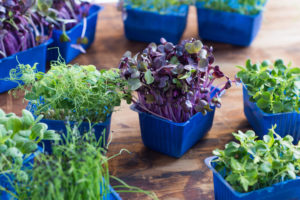
Experiment with microgreens (Courtesy ICE)
On the future:
The overall focus on health has grown tremendously and there has been a renewed interest by some and a brand new interest by others, which is great. The trick will be getting people to stay in the kitchen as things open up. As we head into what may be another tough time, I think people will continue to cook, but there may be a return to some of those comfort foods we saw early on.
As far as the food industry and restaurants, the trend to offer delivery/take-out will continue. I’ve also seen restaurants try to offer “healthier” options or more transparency around the menu items, which should continue.
Advertising disclosure: We may receive compensation for some of the links in our stories. Thank you for supporting LA Weekly and our advertisers.

